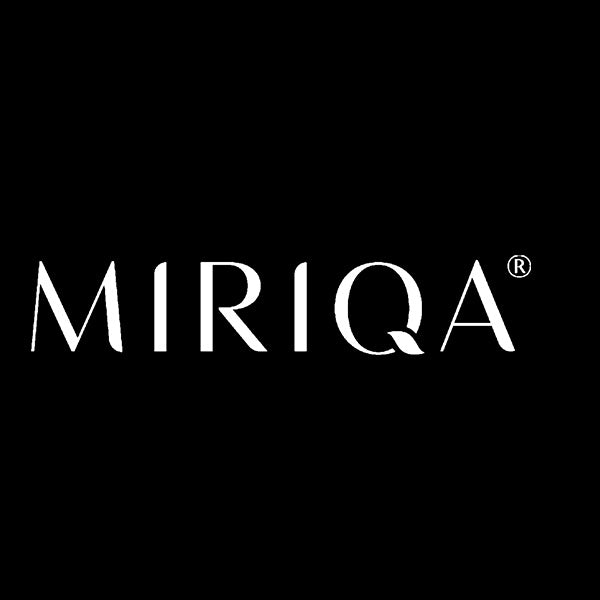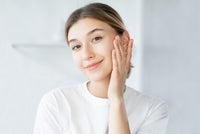Postpartum Hair Loss: Why It Happens & What To Do

The joy of childbirth can rarely be overshadowed, but the looming cloud of postpartum hair loss is still a dreadful concern, especially among new mothers. This shedding of hair can be alarming and distressing. Understanding why postpartum hair loss occurs and what steps can be taken to manage it is essential for navigating this phase with confidence and minimal stress.
Postpartum hair loss affects a significant number of women. In this blog, we will dive into the causes of postpartum hair loss, explore its timeline and duration, and provide practical tips and solutions to help manage and cope with this condition. Whether it is mild shedding or more noticeable hair loss, stay tuned as we uncover the facts and myths surrounding postpartum hair loss.
Understanding Postpartum Hair Loss

What is Postpartum Hair Loss?
Postpartum hair loss, medically known as telogen effluvium, is a common condition that many new mothers face. This phenomenon involves significant hair shedding after giving birth. While it can be quite alarming, it's important to understand that this is a temporary phase that most women experience during the postpartum period.
Why Does It Happen?
The primary culprit behind postpartum hair loss is the dramatic hormonal changes that occur during and after pregnancy. During pregnancy, oestrogen levels are heightened, keeping hair in its growth phase (anagen) for an extended time. This results in thicker and fuller hair. However, after childbirth, oestrogen levels decline, causing a large number of hair follicles to enter the shedding phase (catagen), leading to noticeable hair loss typically beginning around three to six months postpartum.
The Role of Oestrogen and Hair Cycle Phases
Postpartum hair loss is thought to be a result of changes in the hair cycle that occur during pregnancy. The human hair follicle shows patterns of cyclic activity with periods of massive growth (anagen), apoptosis-driven involution (catagen), and a resting phase (telogen). These phases last approximately 1,000, 10, and 100 days, respectively. During pregnancy, the anagen phase is prolonged, and some follicles may even remain in the anagen phase for the entire duration of pregnancy. Postpartum, all the overly active hair follicles enter the catagen phase simultaneously. This transition to the catagen phase is believed to result in excessive postpartum hair loss, known as telogen effluvium. While telogen effluvium is a type of diffuse alopecia, it is distinct from androgenetic alopecia, female-pattern hair loss, and alopecia areata.
Understanding these aspects of postpartum hair loss can help new mothers feel more prepared and less anxious about this common occurrence.
The Science Behind Postpartum Hair Loss

Phases of the Hair Growth Cycle
Understanding the hair growth cycle is essential to grasp why postpartum hair loss occurs. The hair growth cycle consists of four main phases: anagen, catagen, telogen, and exogen.
Anagen (Growth Phase):
- This is the active phase where hair follicles grow. It lasts about 3 to 7 years, and approximately 85-90% of hair on the scalp is in this phase at any given time.
Catagen (Transitional Phase):
- This is a short transitional phase which lasts about 2 to 3 weeks. Hair growth stops, and the hair follicle shrinks.
Telogen (Resting Phase):
- During this phase, which lasts about 3 months, hair does not grow but remains attached to the follicle. Around 10-15% of hairs are in this phase.
Exogen (Shedding Phase):
- This is a part of the resting phase where the hair is shed from the scalp, making way for new hair growth.
How Pregnancy Affects Each Phase
During pregnancy, hormonal changes, particularly elevated oestrogen levels, prolong the anagen phase, resulting in less hair shedding and a fuller appearance. Some hair follicles may even remain in the anagen phase throughout the entire pregnancy. After childbirth, oestrogen levels drop sharply, causing a large number of hair follicles to enter the catagen and then the telogen phase simultaneously. This shift leads to increased shedding, known as telogen effluvium, typically occurring around three to six months postpartum.
Hormonal Influences on Hair
Key Hormones Affecting Hair Growth
Oestrogen
During pregnancy, elevated oestrogen levels extend the anagen phase, resulting in less daily hair shedding and fuller hair. After childbirth, the rapid decline in oestrogen levels causes many hair follicles to enter the telogen phase, leading to increased shedding. And the illusion of rampant hair loss.
Progesterone
This hormone helps maintain pregnancy and has a mild effect on hair growth. Its levels also drop after childbirth, contributing to the shift in the hair growth cycle.The decrease in progesterone, alongside oestrogen, can lead to an accelerated transition of hair into the shedding phase, further contributing to postpartum hair loss.
Prolactin
Elevated during breastfeeding as it induces lactation, prolactin can influence hair loss indirectly by affecting other hormonal balances. This imbalance can prolong the telogen phase, making hair shedding more pronounced. Additionally, the stress of new motherhood combined with prolactin's effects can exacerbate hair thinning during the postpartum period.
Genetic and Other Contributing Factors in Hair Loss
The Role of Genetics in Hair Loss
Genetics play a significant role in determining the severity and duration of postpartum hair loss. Women with a family history of hair loss or thinning hair are more likely to experience more noticeable postpartum hair loss. Genetic predisposition can affect how individual hair follicles respond to hormonal changes, influencing the overall pattern and extent of shedding.
Understanding these factors helps provide a comprehensive picture of why postpartum hair loss occurs and how various influences, from hormones to genetics, play a part. This knowledge can empower new mothers to better manage and cope with hair loss during the postpartum period. In the next section, we will provide practical tips and solutions to manage this temporary condition effectively.
Additional Factors Influencing Postpartum Hair Loss
In addition to hormonal changes, several other factors can influence the extent and severity of postpartum hair loss. Understanding these factors can help in managing and mitigating hair loss more effectively.
Nutritional Deficiencies
Postpartum women are often at risk of nutritional deficiencies due to the demands of pregnancy and breastfeeding. A lack of essential nutrients like iron, zinc, biotin, and vitamins D and B12 can weaken hair follicles and exacerbate hair loss. Ensuring a balanced diet or taking supplements as recommended by a healthcare provider can help reduce this risk.
Stress
The physical and emotional stress of childbirth, coupled with the challenges of caring for a newborn, can contribute to hair loss. Stress can push more hair follicles into the telogen (resting) phase, leading to increased shedding. Managing stress through relaxation techniques, adequate rest, and support can help minimize its impact on hair health.
Sleep Deprivation
New mothers often experience disrupted sleep patterns, which can negatively impact overall health, including hair health. Lack of sleep can lead to hormonal imbalances and increase stress levels, both of which can contribute to postpartum hair loss. Prioritizing rest and seeking help when needed can mitigate these effects.
Medications
Certain medications taken during and after pregnancy, such as those for postpartum depression or high blood pressure, can have side effects that include hair loss. It’s important to consult with a healthcare provider to understand the potential impact of any medications on your hair.
Thyroid Issues
Postpartum thyroiditis, a condition where the thyroid becomes inflamed after childbirth, can also lead to hair loss. Both hyperthyroidism and hypothyroidism can affect hair growth, so it’s crucial to monitor thyroid levels postpartum and seek medical advice if hair loss is accompanied by other symptoms like fatigue, weight changes, or mood swings.
Symptoms and Duration of Postpartum Hair Loss
Postpartum hair loss manifests in several key ways. New mothers might observe the following symptoms:
Increased Hair Shedding:
- Hair fall may be more frequent and in larger amounts when brushing, washing or running your fingers through your hair.
Thinning Hair:
- The overall volume of hair might decrease, leading to a thinner look than during pregnancy due to hair moving onto the catagen phase.
Noticeable Hair Loss at Hairline:
- Many women may experience hair loss around the hairline creating a more pronounced receding hairline.
Depending on the individual's hormones and genes, these symptoms can range from mild shedding to noticeable thinning and hair loss.
Experiencing a hair-raising situation? Don’t worry–you’re not alone, postpartum hair loss typically follows a predictable and manageable timeline, making it easier to navigate this follicular fallout.
This dreaded journey typically lasts around three months after welcoming your little one, you might notice hair shedding, this timing aligns with a drop in oestrogen, pushing your hairs into the telogen (resting) phase. The shedding will peak between three and six months postpartum.
Although a distressing experience, it is nothing to pull your hair out over– it’s temporary, and by the sixth to twelfth month hair loss generally starts to taper off as hormone levels begin to stabilise. Hair follicles reenter the growth (anagen) phase. Knowing what to expect can aid in feeling more reassured.
Emotional and Psychological Impact
Coping with Postpartum Hair Loss
Postpartum hair loss can be emotionally challenging. Understanding that this phase is temporary and implementing hair care strategies can help reduce stress and anxiety.
Support and Resources for New Mothers
Seeking support from other new mothers or professionals can provide comfort and practical advice for managing postpartum hair loss.
Practical Solutions and Medical Treatments
In addition to proper nutrition, addressing more severe hair loss may require practical solutions and medical interventions. Managing postpartum hair loss can be challenging, but there are effective treatments available that can help restore hair health and reduce the impact of shedding. Consulting with a healthcare professional can guide you to the best options based on your specific needs.
If the hair loss is more severe, more intensive treatments may be required. Here are some medical options that may help manage postpartum hair loss:
Minoxidil
Minoxidil was originally introduced as an antihypertensive medication, but its side effect of hypertrichosis (excessive hair growth) led to the development of a topical formulation specifically for hair growth. Minoxidil works by prolonging the anagen phase (growth phase) of the hair cycle and increasing the size of hair follicles. This results in thicker and longer strands of hair. Minoxidil is widely regarded as the first-line treatment for various hair loss conditions, including postpartum hair loss. Applied directly to the scalp, it helps stimulate hair growth and slow down hair loss. It's important to consult a healthcare provider before using Minoxidil to ensure it's suitable for your condition and to discuss any potential side effects.
Platelet-Rich Plasma (PRP) Therapy
PRP therapy is an advanced treatment that uses the patient’s blood cells to create a platelet-rich plasma. This solution is then injected into the target area to activate growth factors, stimulate stem cells within hair follicles, and enhance blood circulation, providing the necessary nutrients and oxygen for healthy hair growth.
The process of PRP therapy involves collecting a small sample of blood and placing it in a centrifuge, a machine that spins rapidly to separate the blood into its base components. The centrifuged substance now contains platelet-rich plasma, which can be further concentrated to increase the number of platelets and growth factors. These growth factors play a crucial role in wound healing and tissue repair, making PRP an effective treatment for stimulating hair growth and improving hair density.
By exploring these medical treatments alongside MIRIQA® hair supplement and serum, new mothers can effectively manage and mitigate the impact of postpartum hair loss, paving the way for healthier hair growth.
By combining proper nutrition, gentle hair care practices, and, if necessary, medical treatments, you can effectively manage and mitigate the impact of postpartum hair loss. Remember, this phase is temporary, and with the right care and support, your hair can regain its health and vitality.
Natural Remedies and Hair Care Practices
Incorporating gentle hair care, proper nutrition, and stress management is key to reducing postpartum hair loss and promoting healthy hair growth.
- Gentle Hair Care
Use sulfate-free shampoos, avoid tight hairstyles, limit heat styling, and be gentle when brushing to minimize hair stress. Regular scalp massages can boost blood circulation and support hair growth.
- Proper Nutrition
- Stress Management
Manage stress through yoga, meditation, and regular exercise to prevent it from worsening hair loss. Adequate sleep is also crucial for overall recovery and hair health.
By adopting these practices, you can effectively manage postpartum hair loss and support your hair's recovery.
Facing the unexpected challenge of postpartum hair loss can take an emotional toll on new mothers, it’s not just about hair loss; it is also about maintaining one's confidence and positive self-image. The sudden shedding of hair can be distressing, to say the least but remember, you’re not alone in this journey. Embrace changes and remind yourself about the temporary nature of this condition. Focus on self-care, indulge in activities that make you happy, and surround yourself with positive affirmations. Keeping a positive mindset is crucial for your mental health.
Struggling with the changes in your hair is difficult but with a solid support system, a world of difference can be made. Speak to fellow mothers who have experienced postpartum hair loss, and lean on your family, friends, and local communities to help you through this difficult journey. They can offer comfort, reassurance, and practical advice. Additionally, consider joining online support groups or forums specifically for mothers in Singapore such as Singaporemotherhood, or Mummysg. These platforms can provide a sense of solidarity, shared experiences and valuable tips from other moms who have been through the same thing.
Practical Solutions and Treatments

In addition to proper nutrition, addressing more severe hair loss may require practical solutions and medical interventions. Managing postpartum hair loss can be challenging, but there are effective treatments available that can help restore hair health and reduce the impact of shedding. Consulting with a healthcare professional can guide you to the best options based on your specific needs.
Good nutrition is the cornerstone for healthy hair, ensuring a diet rich in essential nutrients and vitamins can significantly impact your hair’s strength and vitality. Key nutrients include biotin, known for promoting hair growth and the prevention of hair thinning. Keratin, which is the structural building block for healthy hair, and also Tocotrienol(link to the previous article on Tocotrienol), which helps assist with follicle regeneration.
MIRIQA® Professional Hair Nutrition Supplement is a game changer in improving follicular strength. This supplement, which is highly regarded by the media, is designed to support hair health with a potent blend of nutrients to promote natural hair growth and reduce hair fall. Additionally, incorporating foods rich in vitamins, such as leafy greens, nuts, seeds, and seafood, can further enhance hair health.
Taking care of your hair is crucial, especially during postpartum hair loss. Some general tips for this would include, using milder shampoos and conditioners, products which are sulphate-free and designed for sensitive scalps. Look for shampoos with ingredients such as biotin, keratin, and natural oils which may aid in follicular health.

Using scientifically-researched topical products like MIRIQA® Keep It Healthy Hair serum, will also help nourish further hair growth, by delivering the right nutrients to promote a healthy scalp, and rejuvenate your hair follicles, promoting stronger hair strands. Taking both the MIRIQA® Professional Hair Nutrition Hair Supplement and MIRIQA® Keep It Healthy Hair Serum will provide optimal support to counteract postpartum hair loss, ensuring adequate nutrition to arrest hair fall and encourage hair growth, while nurturing a healthy scalp from the outside for a healthy environment to further boost hair production.
Medical Treatments Available
If the hair loss is more severe, more intensive treatments may be required. Here are some medical options that may help manage postpartum hair loss:
Natural Remedies and Hair Care Practices
Incorporating gentle hair care, proper nutrition, and stress management is key to reducing postpartum hair loss and promoting healthy hair growth.
Gentle Hair Care
Use sulfate-free shampoos, avoid tight hairstyles, limit heat styling, and be gentle when brushing to minimize hair stress. Regular scalp massages can boost blood circulation and support hair growth.
Proper Nutrition
A diet rich in protein, vitamins (like biotin and vitamin D), and minerals (like iron) is essential. Hydrate well and include foods like lean meats, eggs, leafy greens, and fatty fish to nourish your hair from within.
Stress Management
Manage stress through yoga, meditation, and regular exercise to prevent it from worsening hair loss. Adequate sleep is also crucial for overall recovery and hair health.
By adopting these practices, you can effectively manage postpartum hair loss and support your hair's recovery.
Preventing Future Hair Loss
Long-Term Hair Care Tips
Maintaining healthy hair in the long run requires consistent and gentle hair care practices. Here are some tips to keep your locks luscious and strong:
- Gentle Washing: Opt for mild, sulphate-free shampoos and conditioners to keep your hair's natural oils intact.
- Avoid Excessive Heat: Minimise the use of heat styling tools. If you must use them, always apply a heat protectant to shield your strands.
- Scalp Care: Pamper your scalp with regular massages to boost blood flow and use MIRIQA® Keep It Healthy Hair Serum to keep your scalp in tip-top shape.
- Balanced Diet: Nourish your hair from the inside out with a diet rich in hair-loving vitamins and minerals like biotin, keratin forte, tocotrienol, tripeptide collagen, found in MIRIQA® Professional Hair Nutrition Supplement.
Manage Stress for Healthy Hair
Stress can be a real hair-raiser, leading to increased hair loss. Incorporating stress management techniques into your routine can help keep your hair healthy and strong. Consider these activities:
- Yoga: Stretch away the stress with yoga. Look for local classes or online resources tailored for new moms.
- Meditation: Calm your mind and reduce stress levels with daily meditation. Apps like Headspace and Calm offer guided sessions to get you started.
- Exercise: Boost your circulation and reduce stress with regular physical activity. Many fitness centres offer postnatal exercise classes, or you can find online workouts designed for new mothers.
By integrating these practices into your daily routine, you can manage stress effectively and support long-term hair health.
Ready to Take Control of Postpartum Hair Loss?
Postpartum hair loss can feel like a hairy ordeal, but understanding its causes and learning how to manage it can make a world of difference. We've journeyed through the basics of postpartum hair loss, exploring the hair growth cycle, hormonal influences, and the role of genetics.
Recognizing the symptoms and understanding the typical timeline can help new mothers prepare and cope with this temporary condition.
Practical solutions, from nutrition and hair care tips to medical treatments and professional services in Singapore, provide a comprehensive approach to managing hair loss. Remember, you're not alone in this journey. Many new mothers experience postpartum hair loss, and with the right care and support, you can navigate this phase with confidence.
Check out MIRIQA® today and explore the multi-award-winning hair growth supplement, to help you overcome postpartum hair loss. Your journey to healthier, stronger hair and a fuller crown starts here. Stay positive, take care of yourself, and know that this phase is temporary. With time and the right strategies, your hair will regain its strength and vitality. Don't let postpartum hair loss overshadow the joy of motherhood—embrace the changes, and shine on!
Ready for a fuller crown?
Get MIRIQA® Hair Professional Hair Nutrition Supplement at S$128.
1. Daniel K. Hall-Flavin, M. D. (2023, May 10). Can stress make you lose your hair?. Mayo Clinic. https://www.mayoclinic.org/healthy-lifestyle/stress-management/expert-answers/stress-and-hair-loss/faq-20057820
2. Everts, P., Onishi, K., Jayaram, P., Lana, J. F., & Mautner, K. (2020, October 21). Platelet-rich plasma: New performance understandings and therapeutic considerations in 2020. International journal of molecular sciences. https://www.ncbi.nlm.nih.gov/pmc/articles/PMC7589810/RP) Therapy
3. Piérard-Franchimont, C., & Piérard, G. E. (2013). Alterations in hair follicle dynamics in women. BioMed research international. https://www.ncbi.nlm.nih.gov/pmc/articles/PMC3884776/
4. professional, C. C. medical. (n.d.). Postpartum hair loss: Causes, treatment & what to expect. Cleveland Clinic. https://my.clevelandclinic.org/health/diseases/23297-postpartum-hair-loss
5. Suchonwanit, P., Thammarucha, S., & Leerunyakul, K. (2019, August 9). Minoxidil and its use in hair disorders: A Review. Drug design, development and therapy. https://www.ncbi.nlm.nih.gov/pmc/articles/PMC6691938/





